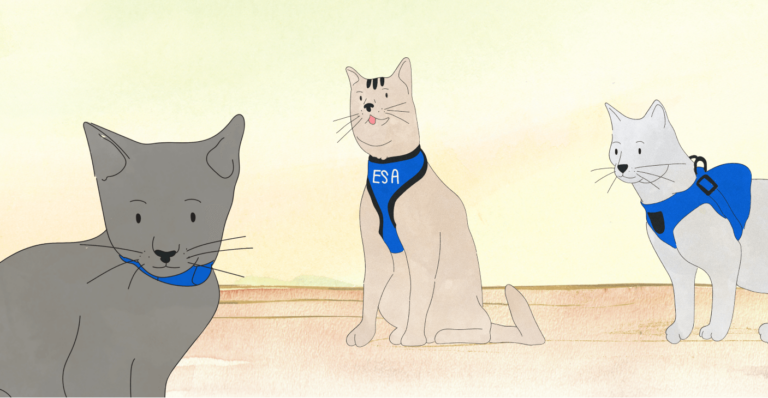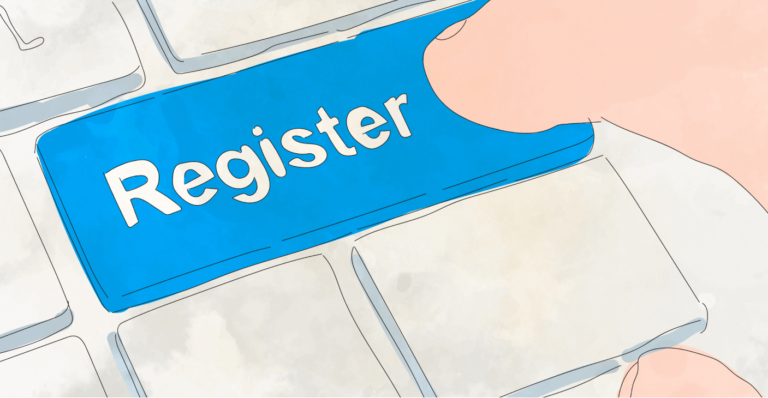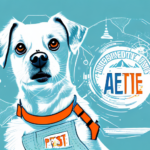Emotional Support Cat
When you picture an emotional support animal (ESA), what do you see? For many people, their ideal ESA is a dog. But while canines and even rabbits can make great ESAs, another popular choice is an emotional support cat.
Clever, quiet, and calming, cats have many qualities that make them perfect ESAs. If your pet has ever comforted you at the end of a difficult day, you won’t be surprised to learn that stroking these animals lowers our cortisol levels. For those who have a mental disability, a cat’s companionship can hugely benefit their emotional well-being.
If you think an emotional support animal could improve your anxiety or depression, read on. This blog post will explain all the information you need to know about getting a recommendation from a doctor or mental health therapist for a cat as an ESA.
What Is An Emotional Support Animal?
An emotional support animal is given special privileges to support its owner through a mental health condition. Under the Fair Housing Act (FHA) and Air Carrier Access Act (ACAA), an ESA can accompany its owner into pet-free accommodation and the airplane cabin on commercial flights.
As we mentioned earlier, an ESA can be any species of animal. However, dogs and cats are two of the most popular choices – which isn’t surprising when you consider over 100 million American households contain a dog or cat. Many people choose to get a recommentation from their doctor for their existing pet to become an ESA instead of adopting a new pet.
It’s important to remember that although emotional support animals aren’t legally classed as pets, they’re not the same as service animals. A valid ESA letter will mean you can’t be discriminated against because of your animal. Still, you won’t have the same privileges as somebody who relies on a service animal because of a physical disability or medical condition.
Some mental conditions that ESAs can help with include:
- Anxiety and panic attacks
- Depression
- PTSD
- OCD
- Autism
Why Choose An Emotional Support Cat?
If dog ownership doesn’t appeal to you, there are many reasons why cats make great emotional support animals. Cats are friendly and affectionate companions, but their small size makes them perfect for traveling with airlines.
For proud cat people, cat ownership can bring a variety of mental and physical benefits. According to recent posts by Cats Protection UK and the Mental Health Foundation in Britain, 76% of cat owners feel their pet enables them to cope more effectively with everyday life. A whopping 87% also said their cat has a positive impact on their overall well being.

What Breeds Of Cats Make The Best ESAs?
Although most cats can’t be trained in the same way that a service dog can, these pets still have many positive attributes. Any breed can make a wonderful ESA for its owner, but that said, various cat breeds are particularly noted for their friendly and loyal natures.
Breeds such as the Burmese, Persian, and Maine Coon are some of the more affectionate cats you’ll meet. Their beautiful fluffy fur makes them excellent cuddlers whilst also providing a sensory distraction for owners who suffer from panic attacks or flashbacks.
Ragdoll cats are also brilliant companions. Often compared to playful puppies, this cat breed is the friendly dog of the cat world and makes a perfect emotional support animal. They are docile and loving, which means they form bonds with their owners very quickly and usually enjoy being cuddled.
How Do I Make My Cat An Emotional Support Animal?
Obtaining an ESA recommendation can seem a confusing process for many people, but you need to follow just a few steps to get your ESA letter consultation. For candidates who suffer from anxiety, depression, or another chronic mental disability, an emotional support cat could be a lifeline that helps you cope on a day-to-day basis.
Below, we’ve explained the complete process of obtaining an ESA consultation. Make sure to follow this process exactly, or your ESA letter may not be valid.
Unfortunately, some people have tried to pretend their animal is an ESA to take it on flights. This means it’s important to have the right documentation to ensure you and your pet can enjoy all the benefits you deserve.

How Does The Registration Process Work?
You need to be suffering from a mental illness that’s mentioned by the Americans with Disabilities Act of 1990 (ADA) to qualify for an ESA letter). A licensed mental health professional must certify that you have this illness and be prepared to prescribe you an emotional support cat.
If you are already receiving treatment from a therapist or other mental health professional, we recommend making an appointment to discuss applying for your emotional support cat. They will be able to say whether they think an ESA will help you deal with your mental illness.
If you are not receiving treatment but have symptoms of anxiety, depression, or PTSD that are seriously affecting your quality of life, get in touch with us at Therapetic.org (all rights reserved). We offer a free and confidential screening test and will put you in touch with licensed mental health professionals in your state.
The results of your screening test will help your therapist decide whether you’re a strong candidate for an emotional support animal. If your therapist agrees that emotional support cats are an effective form of treatment for you, they can prescribe your letter.
Conclusion
If you think an emotional support animal could help you manage your mental illness more effectively, dogs aren’t the only option. Cats are loving and sensitive animals that make wonderful ESAs.
Find out more about how an emotional support cat could change your life by learning how to register
your animal today.





